I can visualise (lol, wrong word) what noise sounds like via an amp with crossover distortion, almost discrete steps at very low levels and yet you found the low bias noisier. Funny things go on in the digital domain 😉
OK, here is the Rotel stuff...
For those just picking this up, I mentioned my old Rotel amp a while back and so took the opportunity to make some files based on a real amp with real crossover distortion. The setup was as shown below with the Rotel loaded by two 3.3 ohm 5 watt metal oxide resistors. Although that seems severe, I think given the levels involved and the fact we are looking to deliberately provoke distortion that it seemed a workable value.
Two sets of files, pure tone and music were produced using normal 120ma bias and zero bias.
The volume on the amp for the 1kHz tones was set using a Philips audio test disc (-3db track) to give 4 volts peak across the 3.3 ohm. Crossover distortion was visible on a scope (just) at zero bias.
The volume on the amp was then increased to give 5 volts peak across the 3.3 ohm load while playing a -6db test track. This was done to give the 'best fit' to the ADC input on the PC.
The input to the ADC was via an attenuator of 2k2 and 220 ohms in series together with 3.3 ohm ground lift resistors.
The Rotel has two speaker outputs and so the load was connected to one set and the record out connected to the other.
The FFT of the 1kHz tones is also below. The tones themselves are clearly labelled and included in the zipped folder.
The two music files produced from normal bias and low bias are here (the file names are a little enigmatic 😀)
Enjoy 🙂
ROTEL FILES
OK, here is the Rotel stuff...
For those just picking this up, I mentioned my old Rotel amp a while back and so took the opportunity to make some files based on a real amp with real crossover distortion. The setup was as shown below with the Rotel loaded by two 3.3 ohm 5 watt metal oxide resistors. Although that seems severe, I think given the levels involved and the fact we are looking to deliberately provoke distortion that it seemed a workable value.
Two sets of files, pure tone and music were produced using normal 120ma bias and zero bias.
The volume on the amp for the 1kHz tones was set using a Philips audio test disc (-3db track) to give 4 volts peak across the 3.3 ohm. Crossover distortion was visible on a scope (just) at zero bias.
The volume on the amp was then increased to give 5 volts peak across the 3.3 ohm load while playing a -6db test track. This was done to give the 'best fit' to the ADC input on the PC.
The input to the ADC was via an attenuator of 2k2 and 220 ohms in series together with 3.3 ohm ground lift resistors.
The Rotel has two speaker outputs and so the load was connected to one set and the record out connected to the other.
The FFT of the 1kHz tones is also below. The tones themselves are clearly labelled and included in the zipped folder.
The two music files produced from normal bias and low bias are here (the file names are a little enigmatic 😀)
Enjoy 🙂
ROTEL FILES
Attachments
Yes, but interestingly enough "kappa" (file B in my ABX) was noisier by ear in the beginning of the music sample.
This said I do not mean the initial system noise, but the ambient noise in the beginning of file that starts about 0.5s as a kind of "huh".
Well,
tocr has OPA549 chipamp added to the audio path.
Well,
I guess sometimes people like a little distortion. Or, maybe the chipamp makes a nice buffer for your data conversion chain. Or, both --added HF detail from distortion, less compression from buffering.
Karl, what kind of dither have you set in your Audacity? Noise shaping, right? How about TPD?
Like this:
Attachments
Well,
I guess sometimes people like a little distortion. Or, maybe the chipamp makes a nice buffer for your data conversion chain. Or, both --added HF detail from distortion, less compression from buffering.
Or a kind of dithering, who knows.
Like this:
Yes, shaped means dither with noise shaping, it emphasizes range above 10kHz up to 20kHz, exactly what I have shown in the spectrum. It is used as it is believed to reduce added noise in low and middle frequencies with increased noise above 10kHz inaudible. In one of my tests years ago I have shown that noise shaping dither may be audible and discernible. I would prefer to use a TPD, triangular option of dither.
Another interesting observation is that low biased Texan suppresses the added HF dither noise, maybe it is just incapable to follow very small higher frequency amplitudes due to crossover area of insensitivity.
Last edited:
You talk about distorsion, buffering, dithering, bias... but I assure you that the quality of the electrical network is fundamental. Now, Friday afternoon, 7:30 pm (Tarragona, Spain) I listen a new and very very very good mono vinyl rip 24/96 FLAC and is awesome the quality sound. It is hard to believe that it is mono and the year, 1959.
Ella Fitzgerald Sings Sweet Songs For Swingers (1959) {US 1st Mono Pressing}
Ella Fitzgerald - Ella Fitzgerald Sings Sweet Songs For Swingers (Vinyl, LP, Album) at Discogs
Ella Fitzgerald Sings Sweet Songs For Swingers (1959) {US 1st Mono Pressing}
Ella Fitzgerald - Ella Fitzgerald Sings Sweet Songs For Swingers (Vinyl, LP, Album) at Discogs
These jazz records from the end of the fifties and from the sixties are very good. I have some of them in my vinyl collection, in fact my first records I have are from my stay in USA (1966/67), Ella Fitzgerald, Duke Ellington, Dukes of Dixieland on Verve, RCA Victor and Columbia.
On the other hand, vinyl has technical limits that you cannot overcome and you will easily find them on classical recordings of philharmonic orchestra, where the usable dynamics is much reduced compared to 16 and 24-bit digital and also the very weak parts are affected by groove noise. Inherent groove noise is the limit you cannot go over, on the other hand, it is the main reason of vinyl sound magic, this LF noise enhanced permanent background. And with headphones, which act like magnifying lens, you will easily find vinyl rip limits.
On the other hand, vinyl has technical limits that you cannot overcome and you will easily find them on classical recordings of philharmonic orchestra, where the usable dynamics is much reduced compared to 16 and 24-bit digital and also the very weak parts are affected by groove noise. Inherent groove noise is the limit you cannot go over, on the other hand, it is the main reason of vinyl sound magic, this LF noise enhanced permanent background. And with headphones, which act like magnifying lens, you will easily find vinyl rip limits.
I assure you that the quality of the electrical network is fundamental
In such case the audio components used need to be re-designed with regard to power supply ripple rejection and EMI filtering.
Last edited:
Bias. My Marantz works with higher bias than the original. The trim-pots original are cheap and and messed up the sound.
[URL]http://maty.galeon.com/WP-imagenes/hard/AV-Marantz-SR4500-inside-bias.jpg[/URL]
I use a lot of [B]Würther 150 kHz ferrites[/B] and [B]Schaffner RFI/EMI filters[/B] in my house. And the DC & [B]Ripple[/B] blocker x4 ME too.
At night and, above all, at the weekend, it is when the improvement is most noticeable. Those old cables that were burned [I](covered with fabric, 40 or 50 years old?)[/I] had to add a lot of noise. [COLOR=Red]Electric companies spend the least on maintenance[/COLOR]. And I have [I]"tons"[/I] of RFI/EMI in the air too.
Before I asked to bavmike about the [B]PSRR[/B] and the [B]Input CMRR[/B] of the new class-D Icepower 1200AS
[url=http://www.audiocircle.com/index.php?topic=153558.msg1643090#msg1643090]The best of class D all in ones circa 2017. Icepower vs Hypex Ncore?[/url]
[url=http://www.audiocircle.com/index.php?topic=153645.0]Icepower 1200AS amp kit. Class D like you've never heard before[/url]
[URL]http://maty.galeon.com/WP-imagenes/hard/AV-Marantz-SR4500-inside-bias.jpg[/URL]
I use a lot of [B]Würther 150 kHz ferrites[/B] and [B]Schaffner RFI/EMI filters[/B] in my house. And the DC & [B]Ripple[/B] blocker x4 ME too.
At night and, above all, at the weekend, it is when the improvement is most noticeable. Those old cables that were burned [I](covered with fabric, 40 or 50 years old?)[/I] had to add a lot of noise. [COLOR=Red]Electric companies spend the least on maintenance[/COLOR]. And I have [I]"tons"[/I] of RFI/EMI in the air too.
Before I asked to bavmike about the [B]PSRR[/B] and the [B]Input CMRR[/B] of the new class-D Icepower 1200AS
[url=http://www.audiocircle.com/index.php?topic=153558.msg1643090#msg1643090]The best of class D all in ones circa 2017. Icepower vs Hypex Ncore?[/url]
[url=http://www.audiocircle.com/index.php?topic=153645.0]Icepower 1200AS amp kit. Class D like you've never heard before[/url]
OK, here is the Rotel stuff...
For those just picking this up, I mentioned my old Rotel amp a while back and so took the opportunity to make some files based on a real amp with real crossover distortion. The setup was as shown below with the Rotel loaded by two 3.3 ohm 5 watt metal oxide resistors. Although that seems severe, I think given the levels involved and the fact we are looking to deliberately provoke distortion that it seemed a workable value.
ROTEL FILES
6/8 first trial, nothing special, but yes, the bass guitar. I will try again tomorrow.
Code:
foo_abx 2.0.2 report
foobar2000 v1.3.7
2017-11-10 20:33:04
File A: 7 of 9.wav
SHA1: fa928273c1e00dacd659815422408e03887cad1a
File B: 9 of 7.wav
SHA1: 053dbe2c3cda1637e1b2e78cc547e01e0598c718
Used DSPs:
Resampler (PPHS)
Output:
WASAPI (event) : Speaker (USB Sound Blaster HD), 24-bit
Crossfading: NO
20:33:04 : Test started.
20:34:05 : 01/01
20:34:36 : 02/02
20:34:52 : 03/03
20:35:07 : 04/04
20:35:39 : 05/05
20:35:56 : 05/06
20:36:12 : 06/07
20:36:42 : 06/08
20:36:42 : Test finished.
----------
Total: 6/8
Probability that you were guessing: 14.5%
-- signature --
9dbfa55aaea7e053db1f1161e23908a711f2eeb0Yes, shaped means dither with noise shaping, it emphasizes range above 10kHz up to 20kHz, exactly what I have shown in the spectrum. It is used as it is believed to reduce added noise in low and middle frequencies with increased noise above 10kHz inaudible. In one of my tests years ago I have shown that noise shaping dither may be audible and discernible. I would prefer to use a TPD, triangular option of dither.
Another interesting observation is that low biased Texan suppresses the added HF dither noise, maybe it is just incapable to follow very small higher frequency amplitudes due to crossover area of insensitivity.
That puts it well (crossover area of insensitivity), or the dead zone as I call it.
After all these tests though, I can't help but feel that crossover distortion is only part of the story as to why amplifiers can sound very different in real use. Something isn't coming across in these tests that so obviously does in real life.
The differences in all these files are small, you have to concentrate to pick them out, and the differences are not those that I know I hear comparing one amplifier to another.
Logic says we should mostly be happy with for example your OPA power amp 😉 or even a Texan. None of them sound bad in these tests.
Thanks for trying the Rotel 🙂 This has been one of the best threads in ages

Now, at Radio Clásica (RNE), with the Marantz's FM tuner: Debussy y Ravel, con Juanjo Mena, Benedetto Lupo y la Orquesta Sinfónica y Coro RTVE
Debussy y Ravel, con Juanjo Mena, Benedetto Lupo y la Orquesta Sinfonica y Coro RTVE - RTVE.es
It seems that I am sitting there!
******* ******
Cheap and dirty pot-trim
Debussy y Ravel, con Juanjo Mena, Benedetto Lupo y la Orquesta Sinfonica y Coro RTVE - RTVE.es
It seems that I am sitting there!
******* ******
Cheap and dirty pot-trim
I used to listen to the radio a lot although unfortunately we have DAB at mediocre bit rates these days. FM is still there if you want it. You are streaming it from the web ? probably the best option for quality.
I'm to old fashioned, my main listening room set up has no PC connectivity to the audio system. I enjoy spinning the CD's or SA-CD and also have quite a collection of MiniDisc.
I'm to old fashioned, my main listening room set up has no PC connectivity to the audio system. I enjoy spinning the CD's or SA-CD and also have quite a collection of MiniDisc.
Radio Clásica only has... 128 kbps 🙁
With the TDT the sound is Dolby but the family.... TV is god. And my AV Yamaha does not have the musicality of the Marantz (Yamaha sound is very good with TV and films/series and the YPAO works very well). And I LOVE my cheap tweaked KEF Q100 speakers. The 5.25" KEF coaxial is magic.
I would never have believed that such a small speaker reproduced the intricate sound of an orchestra so well.
********** **********
PS: Beginning to read the order of the judge of instruction on the president of the Parliament of Catalonia. Only 26 pages.
With the TDT the sound is Dolby but the family.... TV is god. And my AV Yamaha does not have the musicality of the Marantz (Yamaha sound is very good with TV and films/series and the YPAO works very well). And I LOVE my cheap tweaked KEF Q100 speakers. The 5.25" KEF coaxial is magic.
I would never have believed that such a small speaker reproduced the intricate sound of an orchestra so well.
********** **********
PS: Beginning to read the order of the judge of instruction on the president of the Parliament of Catalonia. Only 26 pages.
After all these tests though, I can't help but feel that crossover distortion is only part of the story as to why amplifiers can sound very different in real use.
Sure, there is no doubt!! And in fact I wanted to show just the opposite, that the crossover distortion below some limit is inaudible. But we cannot mix everything into one thread. There is no doubt that especially linear issues like frequency response modulation by speaker impedance, which is the issue of almost all tube amplifiers, is very audible.
It seems that I am sitting there!
******* ******
Cheap and dirty pot-trim
Until you have a chance to sit there or to use better source of sound. Do not make me laugh, the dynamics of the big concert hall you are never able to transfer to your home, and especially not through compressed FM.
I did have similar imaginations, but 40 years ago I was at the practice in Supraphon recording studios for one months, recording mainly the classical orchestral music. For the next 25 years, I stopped any improvements in my home hifi and considered all the hifi efforts as useless. Then I have humbly accepted the fact that it is absolutely impossible to bring a concert sound to my/your sitting room.
- Status
- Not open for further replies.
- Home
- General Interest
- Everything Else
- Test your ears in my new ABX test
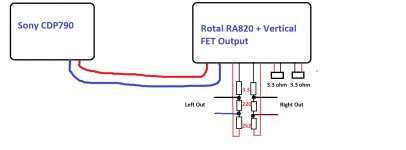
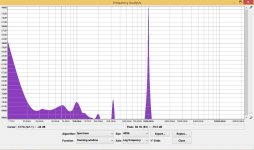
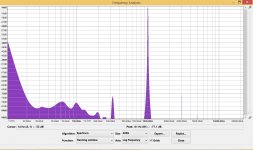
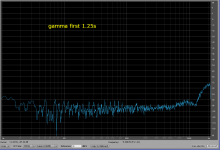
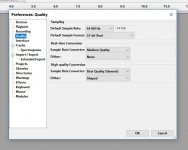
:format(jpeg):mode_rgb():quality(90)/discogs-images/R-1603256-1485887266-8915.jpeg.jpg)